Klumpke's Paralysis
Klumpke's palsy, sometimes called Dejerine-Klumpke palsy, is a type of brachial plexus injury that occurs due to an injury of the network of spinal nerves that originates in the back of the neck and extends through the shoulder, arm, and hand. During a difficult vaginal delivery, these nerves may be stretched or torn due to birth trauma when excessive force is applied to the baby's arm or shoulder.
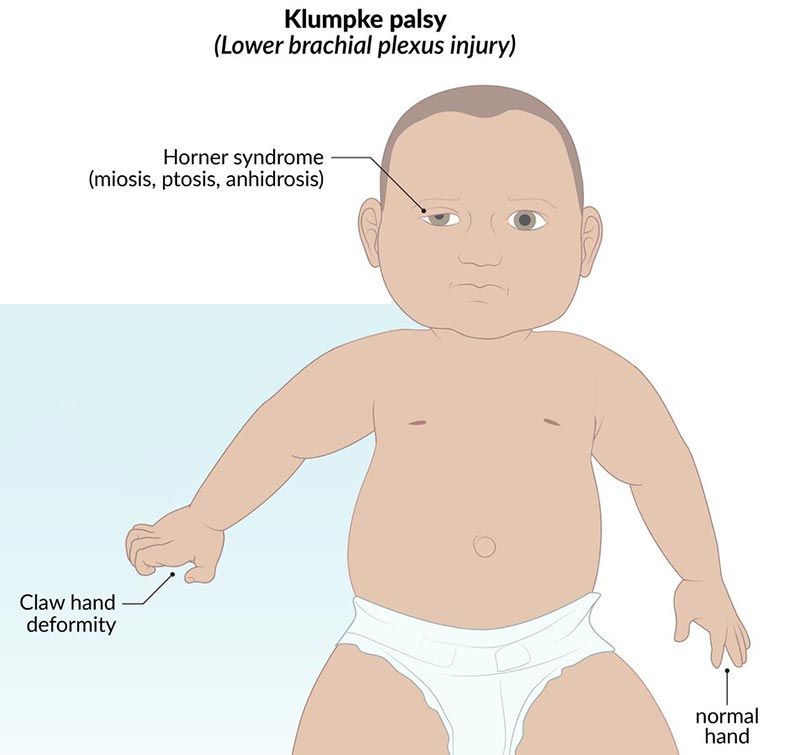
A baby with Klumpke's palsy may experience weakness or paralysis in their forearm and hand. In cases where nerve damage is more severe, the infant may experience a permanent loss of function in the affected arm and hand. Early intervention is crucial for recovery, and parents should be proactive in seeking medical attention if they suspect their child may have Klumpke's palsy.
Most often Klumpke's Palsy occurs due to birth complications during labor and delivery. In many cases, the underlying cause of Klumpke's palsy can be linked to a healthcare professional's failure to take the necessary steps to anticipate or respond to birth-related risks.
Free Consultation
National Birth Injury Lawyers
1-888-987-0005
Birth injuries can have lifelong effects on your child's health and development. If you believe that a physician or other medical provider's negligence is to blame for your child's birth injury, understanding your legal rights and options is crucial to securing the compensation you need to provide for their ongoing medical care and support.
Our team of experienced and compassionate birth injury lawyers at Miller Weisbrod Olesky is committed to supporting your child and family through this difficult time. We are passionate about fighting for the rights of birth-injured children and ensuring negligent healthcare providers are held accountable for their actions.
What is Klumpke's Palsy?
Klumpke's palsy is a birth complication that occurs as a result of a birth injury that causes damage to the lower part of the brachial plexus. The brachial plexus is a network of five nerves (C5, C6, C7, C8, and T1) that run from the spine, along the side of the neck, through the armpit area, and down the arm.
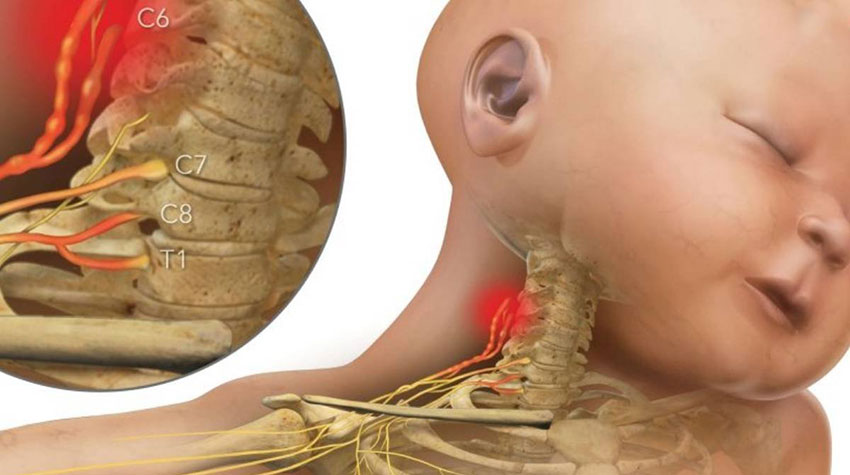
This network of nerves is responsible for sending signals from the spine to the shoulder, arm, and hand. When this collection of nerves is damaged, specifically the C8 and T1 nerve roots, it can partially paralyze a baby's hand and forearm muscles. A "claw-like" hand presentation is a hallmark symptom of Klumpke's palsy. This occurs as a result of the muscles in the hand becoming weakened or paralyzed and causing the child's fingers to curl into a claw-like shape.
Erb-Duchenne or Erb's palsy is the other, more common type of brachial plexus birth injury that occurs in approximately 0.9 to 2.6 per 1,000 live births. This condition affects the upper portion of the brachial nerve (C5 and C6) and is often caused by the baby's neck being stretched to one side during a difficult delivery.
The primary manifestation of Erb's palsy is a weakness or paralysis that impacts the shoulder and upper arm. Children with Erb's palsy may experience limited movement or an inability to raise their arms, though they may retain some motion in their hands and fingers.
It's important to remember that outcomes for children affected by Klumpke's palsy or Erb's palsy can vary depending on the severity of nerve damage but can significantly improve with early diagnosis or treatment.
What Causes Klumpke's Palsy?
Klumpke's palsy ultimately results from varying degrees of damage to the brachial plexus nerves. The four types of acute brachial plexus injuries that can lead to this condition, listed from milder to more severe, include the following:
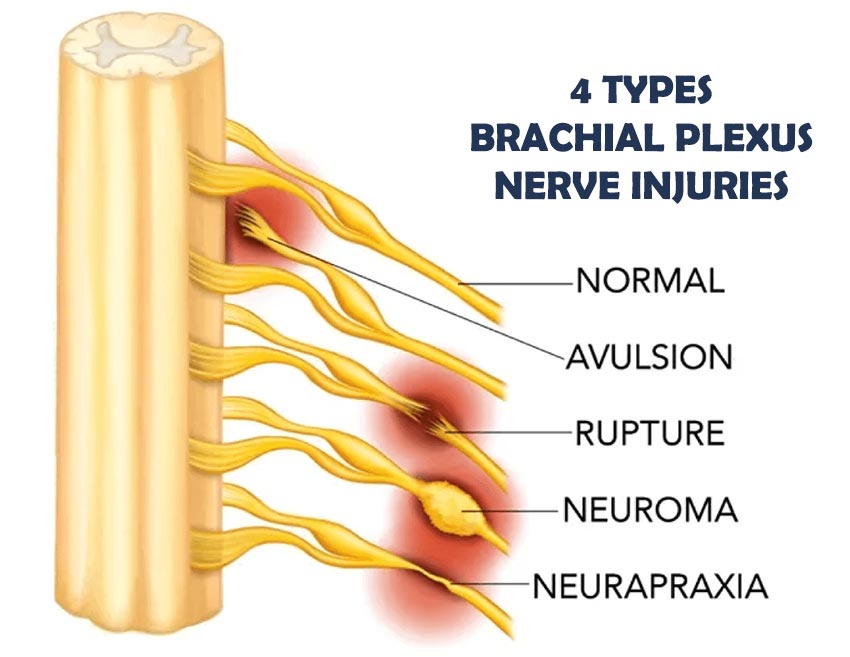
- Neuropraxia: The most common and least severe type of birth injury causing Klumpke's palsy characterized by the stretching of the nerve without tearing.
- Neuroma: This occurs when the birth injury has healed, but scar tissue has formed and is putting pressure on the surrounding nerves, limiting the nerves from sending signals to the arm and hand.
- Rupture: The nerve is torn but remains attached to the spinal cord.
- Avulsion: An avulsion birth injury is the most serious type, where the C8 and/or T1 nerve is completely severed from the spine.
It's important to note that in newborns, the most common cause of Klumpke's Palsy is medical negligence from birth trauma during labor and delivery. While some birth complications of pregnancy and childbirth cannot be controlled, physicians and other healthcare providers are responsible for recognizing and managing common risk factors that may increase a child's risk of developing Klumpke's palsy. This condition is often preventable with proper care and attention during childbirth.
Some risk Klumpke's maternal risk factors that can raise the risk of Klumpke's palsy include:
- Pelvic abnormalities: A small or irregularly shaped pelvis can complicate delivery.
- Smaller size or older age: Smaller mothers or those of advanced age (35 years or older) may experience more challenging labors.
- Substantial weight gain: Excessive weight gain during pregnancy can increase delivery complications.
- Gestational diabetes: This condition often leads to larger-than-average babies (macrosomia), increasing delivery risks.
- History of Klumpke's palsy: Mothers who previously delivered a baby with Klumpke's palsy may face a higher risk in subsequent pregnancies.
Complications during labor and delivery also contribute to the development of Klumpke's palsy. Common risk factors include:
- Shoulder Dystocia: When the baby's shoulder becomes lodged behind the mother's pubic bone during delivery, it can result in a prolonged and difficult delivery. This birth complication can require the use of specific techniques, such as the McRoberts maneuver or suprapubic pressure.
These methods involve repositioning the mother or applying pressure to the lower abdomen to help shift the baby's position. However, the excessive force or awkward twisting of the baby's body during these maneuvers can cause nerve damage. - Breech position: Babies delivered in a breech position (The baby's buttocks or feet are positioned to come out first) are at an increased risk of nerve damage during delivery from birth trauma. The awkward positioning of the baby during a breech birth can result in brachial plexus injuries such as Klumpke's palsy.
As the baby is pushed through the birth canal, the abnormal positioning can cause excessive stretching, pulling, or twisting of the neck and shoulders. These forces may damage the brachial plexus nerves, leading to weakness or paralysis in the arm or hand. - Labor induction: Overuse or improper administration of labor-inducing drugs like Pitocin and Cytotec can result in prolonged labor, increasing the risk of birth complications such as excessive uterine contractions, fetal distress, or the need for emergency interventions. These issues can contribute to the development of Klumpke's palsy by placing additional stress on the baby's nerves during the delivery process.
- Large birth weight (Macrosomia): Babies born with a large birth weight, typically greater than 8 pounds, 13 ounces, are at an increased risk of brachial plexus injuries. When a baby is larger than average, it can be more difficult for the baby to pass through the birth canal, especially if the mother has a small pelvis. During delivery, the baby's shoulders may become stuck behind the mother's pubic bone (shoulder dystocia).
To help dislodge the baby, medical staff may employ various techniques that involve excessive pulling, twisting, or compression of the baby's arm or shoulder. These actions can put excessive strain on the baby's brachial plexus, leading to nerve damage. - Prolonged second stage of labor: A prolonged second stage of labor (lasting more than an hour) can put significant stress on both the mother and baby. If a doctor fails to perform an emergency C-section, it could put the baby at risk of oxygen deprivation and increase the likelihood of birth injuries, like Klumpke's palsy.
- Improper use of forceps or vacuum extractors: Misuse of forceps or vacuum extractors can cause significant birth trauma to a baby during delivery if applied with excessive force or incorrect technique. These tools can exert excessive pressure on the baby's head, neck, or shoulders, potentially causing nerve damage, fractures, or other injuries. Medical professionals must exercise caution and follow established protocols when using delivery tools to avoid causing preventable harm.
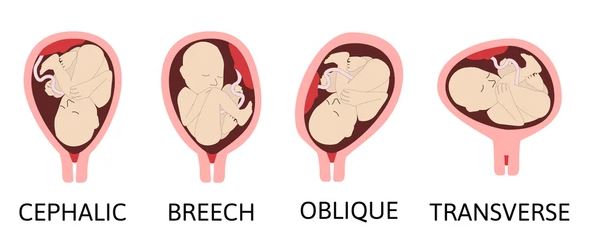

Klumpke's palsy can also result from accidents, traumatic birth injuries, or tumors affecting the brachial plexus nerves. In cases where tumors or lesions cause the condition, restoring or improving range of motion may not always be possible.
Medical professionals have a duty to provide a standard of care that safeguards the safety and well-being of their patients. When they fail to meet this standard, and it results in preventable harm to a mother or her newborn, those affected may be entitled to compensation for medical costs, ongoing treatment, and rehabilitation.
A skilled medical malpractice attorney can help victims seek justice by thoroughly investigating the circumstances surrounding the injury, identifying any breaches in the standard of care, and advocating for fair compensation.
Signs and Symptoms of Klumpke's Palsy
Symptoms of Klumpke's palsy can vary based on the severity and location of the injury to the brachial plexus. Some babies with Klumpke's palsy may exhibit a range of symptoms that are immediately obvious, while others may exhibit more subtle signs that initially go unnoticed.
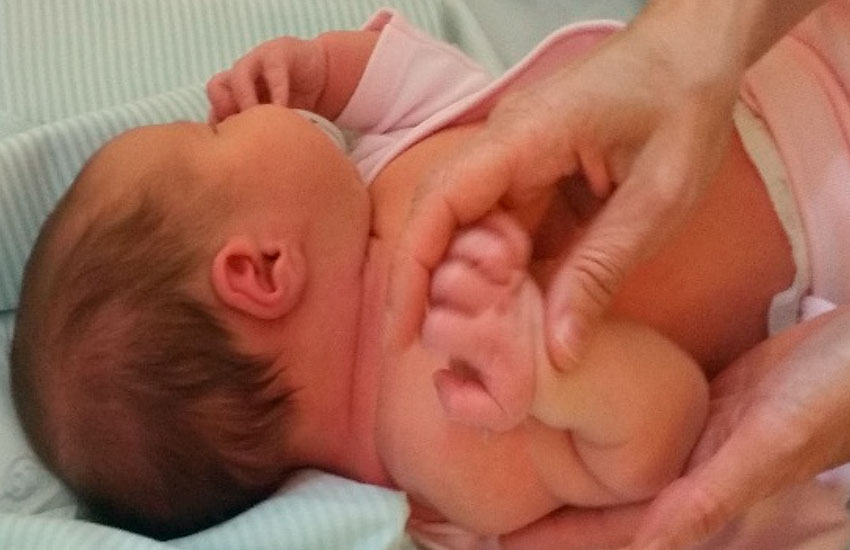
In cases where the nerves are completely severed, it can result in permanent paralysis or significant loss of function in the affected arm and hand. These functional impairments may affect the child's ability to perform tasks like feeding, dressing, and writing as they grow. Additionally, the inability to perform basic tasks like gripping objects can potentially lead to issues with independence and self-esteem.
Common symptoms of Klumpke's palsy include:
- Muscle weakness and atrophy of the arm or hand
- A "claw hand" (the hand curls in on itself)
- Horner's Syndrome (characterized by a drooping eyelid, smaller pupil size, and lack of sweating on one side of the face)
- Numbness (The affected arm and/or hand may feel numb or have reduced sensation)
- Pain (sometimes severe) or discomfort in the affected arm or hand
- Difficulty holding objects or performing fine motor tasks, such as writing or tying shoelaces
- Stiffness in the wrist or hand joints
- Abnormal positioning of the arm, such as the palm turned upward or outward with the elbow bent
- Regular bouts of crying caused by ongoing pain
If your newborn went through a difficult delivery and is exhibiting any of the listed signs or symptoms, you should consult a doctor immediately for diagnosis and any necessary treatment. Early intervention is critical in addressing Klumpke's palsy and can significantly impact your child's recovery and long-term outcomes. A doctor may recommend a range of treatment options, from physical therapy to improve strength and mobility to surgical procedures in cases of severe nerve damage.
Timely treatment not only helps alleviate symptoms but also reduces the risk of permanent nerve damage, muscle atrophy, or functional limitations. Parents should closely monitor their child's progress and follow all medical recommendations to ensure the best possible recovery. A knowledgeable birth injury lawyer can help families affected by medical negligence seek compensation to cover the cost associated with their child's care.
How Is Klumpke's Palsy Diagnosed and Treated?
Diagnosing Klumpke's palsy typically begins with observing the child's symptoms and conducting a thorough physical examination. During this evaluation, the doctor will carefully assess the baby's arm for signs of weakness, limited range of motion, or abnormal positioning. They may also evaluate the baby's hand and fingers for signs of "claw hand" or other deformities.
To confirm the diagnosis and pinpoint the location and severity of nerve damage, doctors may utilize the following diagnostic tools:
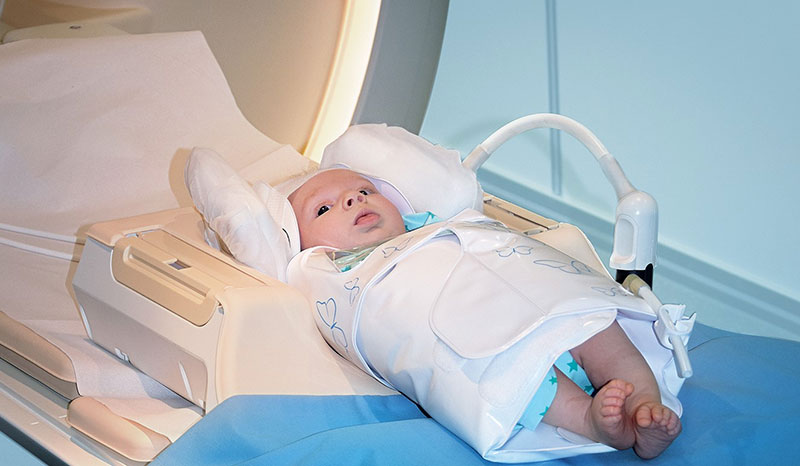
- Computed tomography (CT scan): CT scans provide detailed images of the bones and soft tissues. These images are especially useful for helping doctors identify whether there are any bone fractures or underlying skeletal issues that might be contributing to nerve damage or compression.
- Electromyogram (EMG): An EMG evaluates the electrical activity of muscles to assess the function of the nerves. It is particularly valuable for determining the degree of nerve damage and its impact on muscle activity.
- Magnetic resonance imaging (MRI): An MRI produces highly detailed images of soft tissues, including nerves and muscles. This test can reveal any structural damage to the brachial plexus or surrounding tissues.
- Ultrasound: A non-invasive imaging technique that uses sound waves to create real-time images of the brachial plexus and surrounding tissues. It is often used to help doctors detect abnormalities, such as nerve damage or compression, and assess the extent of the injury.
- X-ray: X-rays are often used to check for fractures, dislocations, or other skeletal issues that may have contributed to the injury. They can also help rule out bone abnormalities as a potential cause of the symptoms.
Once Klumpke's palsy is diagnosed, treatment will depend on the severity of the injury and the specific needs of the child. In mild cases, babies with Klumpke's palsy will regain normal or near-normal function without treatment in a few months. Researchers estimate that up to 88% of infants recover by 4 months and 92% by 12 months.
If there are no bone fractures or joint dislocations, doctors typically recommend non-surgical treatments for these milder cases. Newborns should begin light exercises and physical therapy as early as possible to improve the range of motion, reduce pain, and promote healing in the nerves. Physical therapy may also include gentle massage and the use of splints to help align the hand, wrist, or arm.
For more severe cases where the nerve is torn or ruptured, surgery may be required to repair the damage. Depending on the severity and location of the nerve damage, a doctor may recommend the following procedures:
- Nerve grafting: A healthy nerve is taken from another part of the body and used to repair or replace the damaged nerve.
- Nerve Transfer: This surgical procedure involves a surgeon replacing the entire damaged nerve by redirecting a functional nerve from a different area of the body.
- Tendon transfer: Tendons from other areas are moved to improve muscle movement and function in the affected limb.
- Scar tissue removal: If scar tissue has built up around the nerve, surgery may be performed to remove it, allowing for better nerve healing and function.
- Muscle and joint reconstruction: In cases where the nerve damage is extensive, surgeries may focus on reconstructing muscles and joints to prevent further disability and enhance mobility.
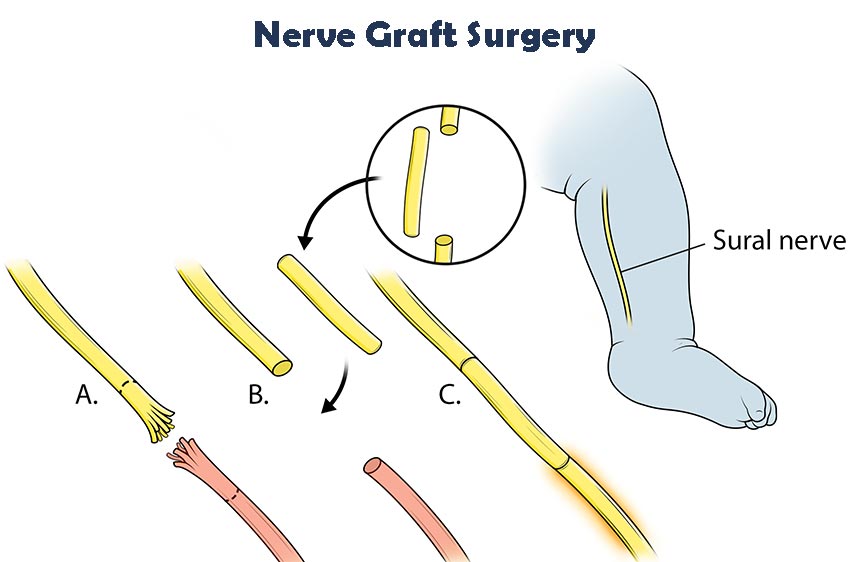
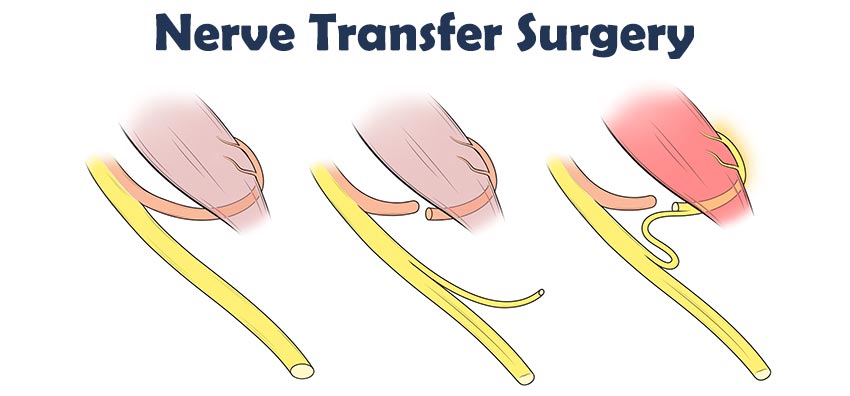
Surgical options are usually considered when an infant shows little improvement after three to six months of undergoing non-surgical interventions like physical therapy. Early intervention with surgery can often yield better outcomes, minimizing the risk of permanent disability or functional limitations.
The medical expenses associated with treating Klumpke's palsy can be significant, especially when long-term therapies, surgeries, and rehabilitation are required. These costs can add up over time, affecting the child's immediate care and their future needs as they grow. An attorney with extensive experience handling birth injury cases can guide families through the process of recovering damages for their child's immediate and future care needs.
Medical Negligence in Birth Injury Cases
Depending on the facts of your situation, a birth injury medical malpractice claim may not be limited to the attending physician who delivered your child. There is a wide range of healthcare professionals, such as nurses or anesthesiologists, who may also be held at fault in a birth injury case.

Here are some examples of medical professionals that could be held liable for your child's facial nerve paralysis:
- Doctors and surgeons
- Nurses
- Anesthesiologists
- Hospitals
- Healthcare institutions
- Other hospital staff
A medical malpractice lawsuit brought against a hospital usually involves hospital employees such as nurses, anesthesiologists, and technicians. A hospital would typically not be held liable for the negligent actions of a doctor who works at a hospital as an independent contractor. In situations where a doctor is employed by the hospital directly, however, the hospital may be held vicariously liable for malpractice by a doctor.
In the context of medical malpractice actions, a hospital can also be held directly liable for its own negligence if it fails to make reasonable inquiries into a member of its medical staff's education, training, and licensing. A hospital may also be found directly responsible for negligence if it fails to protect patients from harm by ensuring there is always enough registered nurses and other staff on duty to provide care as needed. A qualified birth injury malpractice attorney can discuss the specifics of your case with you, help you identify who should be held responsible for your child's birth injury, and bring a lawsuit against all negligent parties.
Legal Damages in a Birth Injury Lawsuit
Taking legal action against a negligent doctor, hospital, or other healthcare professional may allow you to recover compensation for birth injury-related expenses you've incurred. Damages in a birth injury lawsuit fall into two categories: economic and non-economic damages.
Economic damages account for any monetary losses you've sustained as a result of the birth injury. Non-economic are awarded to compensate the victim for subjective, non-financial losses such as the pain and emotional suffering they endured due to the injury. A medical malpractice attorney can evaluate your case and help you determine the compensation you may be eligible to recover.
Here are some examples of recoverable damages in a birth injury case:

Economic Damages
- Medical and Life Care expenses (past and future)
- The cost of physical, occupational, or speech therapy (past and future)
- Parent's lost income due to tending to their child's needs (past and future)
- The cost to modify a home/vehicle and make it accessible
- The child's reduced ability to work and earn income in the future
- The cost of nursing and personal home care by trained professionals
Non-economic Damages
- Psychological and emotional trauma
- Physical pain and discomfort
- Loss of enjoyment of life
- Paralysis, scarring, and disfigurement
In addition to economic and non-economic damages, punitive damages may be awarded in cases where a doctor or other healthcare provider has committed grossly negligent or reckless acts. These damages are intended to punish the at-fault party for their egregious behavior and serve as a warning to discourage others from engaging in similarly negligent behavior.
Even though the immediate costs of dealing with a birth injury can be financially devastating, the long-term costs of caring for a child with Erb's palsy can be even greater. The settlement amount you will receive will depend on several factors, including the severity of your child's injuries, how long the condition is expected to last, and the type of treatment your child needs.
For example, if your child requires only a few check-ups while their brachial plexus injury heals on its own, your medical bills are likely to be lower, and you can expect a lower settlement award. However, if their congenital birth injury is severe and your child is unable to use muscles for the rest of their life, this will be taken into consideration, and the settlement amount will typically be higher. An experienced birth injury attorney will work with you to figure out the extent of your child's condition and see what damages may arise from your case.
Calculating how much your birth injury claim might be worth will typically require us to draw on the experience and knowledge of our vast network of financial and qualified medical experts. If you have questions about compensation, reach out to one of our birth injury lawyers as soon as possible so we can inform you of your legal options and create an action plan moving forward.
Waste No Time

Statutes of limitations (SOL) are established by law in each state and dictate the time-frame within which a personal injury lawsuit must be initiated. Typically, the countdown begins on the date of the injury. However, the discovery rule provides an exception to this rule in cases where the injury was not immediately apparent. Under this rule, the clock doesn't start ticking until the injured person discovers or reasonably should have discovered their injury. This can be confusing, so it's advisable to contact a knowledgeable birth injury attorney to discuss your and your child's legal rights and options.
According to Chapter 74 of the Texas Civil Practices & Remedies Code, there are several deadlines for filing a birth injury case in the state.
These include:
- For damages (other than medical expenses) incurred until age 18, a lawsuit must be filed by the time the child turns 14.
- To recover medical expenses for the child from birth until age 18, the lawsuit must be filed within two years of the date of the accident.
If the statute of limitations expires in your case, you may lose the opportunity to seek compensation. A medical malpractice lawyer can determine the specific deadlines that apply to your unique situation and ensure paperwork is filed on time.
Contact Our Birth Injury Attorneys Today

At Miller Weisbrod Olesky, we understand how overwhelming it can be to navigate the aftermath of a birth injury. That's why we are committed to providing birth-injured children and their families with aggressive and compassionate legal representation.
With a proven track record of securing outcomes, our team of dedicated birth injury attorneys is passionate about fighting for the rights of families affected by medical negligence. If your child has been diagnosed with a birth injury that you believe resulted from a preventable medical error, don't hesitate to reach out to us.
During your complimentary case review, we'll take the time to listen to your story, answer your questions, and evaluate the details of your situation. Let us put our extensive experience and resources to work for you. Call our toll-free line at 888-987-0005 or schedule your complimentary consultation using our online request form.
